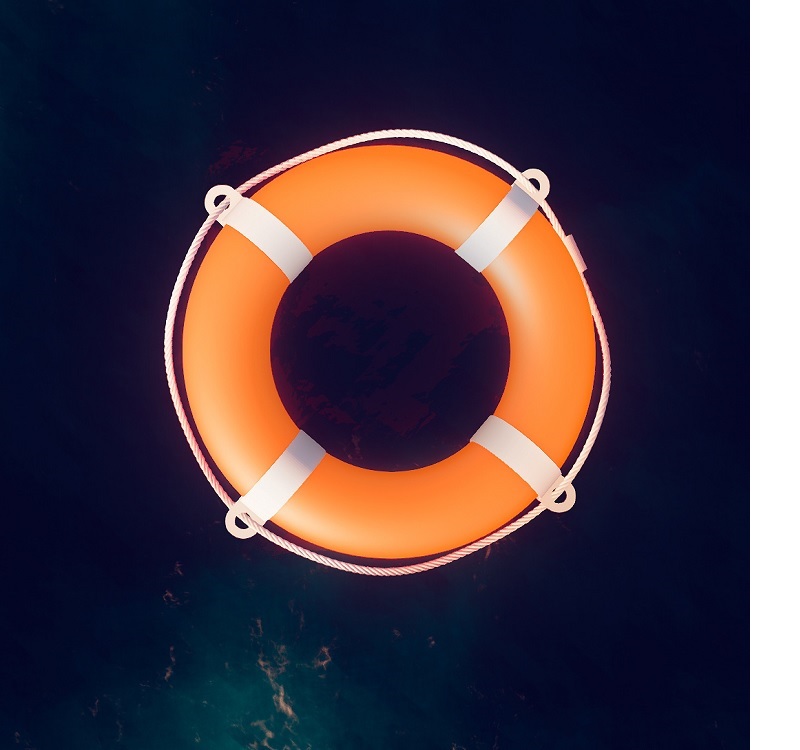by Elayna Alexandra

When I was 13 years old, I told my parents I really didn’t want to be alive and I wanted to kill myself. Instead of getting me the counseling and therapy that might have helped me, my parents punished me. Life continued.
I grew up and built what anybody would consider a pretty good life, with a successful career and two great kids. But my mental health struggles didn’t end. Periodically I would spiral downward and have the urge to commit suicide. I eventually started therapy, but it wasn’t a magic potion. I continued to pass into periods that were so dark I was scared of myself.
I eventually found a set of tools to help me break this pattern. I call them my Life Raft. When I first implemented this I was in my late 20s, living in a tiny one-bedroom apartment in Denver. A number of things (including a recent breakup) were routinely triggering my depression, and I had a very limited support network in Colorado, where I had recently moved. During this period I began to understand the patterns of my depression, and that helped me recognize when I was starting to spiral and break the cycle of self-destructive thoughts.
Before I could get to the Life Raft, I had to take two steps. First, I had to admit I needed professional help. If you’re ever feeling hopeless, even just a little bit, don’t wait for things to get so bad that you’re feeling suicidal. Life is difficult for everyone, and having a disability is immensely complicating to that already difficult life. Limb difference and limb loss often trigger grief, anger, mourning, and other emotions—and those feelings get stored in our bodies (read The Body Keeps Score if you want to know more).
Talking to a therapist helped me process my negative emotions and understand their harmful effects. It also helped me take the next step, which was identifying the thoughts and behaviors that invaded my mind just before I descended into a Spiral of Darkness. If you regularly experience periods of bleak depression, you know what this early-warning system feels like. Can you identify the signs of an impending spiral before it starts? Learning to do that is a necessary step before you start building a Life Raft.
The Life Raft is a sturdy refuge that keeps you afloat when negative emotions are trying to drag you under and drown you. You build it when you are in a good place, making a list of the things that will support you when things get rough.
On my Life Raft, one of the key planks is being outside. Talking a long walk helps me in multiple ways: It changes my location, gets me in nature, releases endorphins, and literally alters my viewpoint. I couldn’t rely on this in the months immediately after limb loss, because finding a prosthetic device that worked for me was a long, painful, and complex process. I needed my Life Raft more than ever during those difficult months, so I had to find other ways to get outdoors, move around, and get the relief I usually get through walking. Sometimes I just sat outside. Other times I would move to get near my plants or watch a nature show on TV.
Another part of my Life Raft is my journal. It’s where I take care of myself through compassionate self-talk, giving myself the same support, forgiveness, and grace that I would give a good friend when they’re struggling. Friends are yet another part of my Life Raft—when I need to break the cycle of negative emotions, I often call somebody I trust. But you can’t always reach the right person on demand, and sometimes I just don’t feel like talking. Journaling is always available.
Meditation is a recent addition to my Life Raft. So is yoga, which is wildly helpful now but wouldn’t have been years ago, before my amputation. My Life Raft sometimes includes treating myself to a coffee or a little chocolate. I have a go-to outfit in my closet that makes me feel good, some favorite go-to comfort food in my fridge, and a go-to protein bar that I carry with me in case my blood sugar crashes.
These are all part of the Life Raft I have created for myself. When I feel the whirlpool pulling me down, the Life Raft keeps me above water. I didn’t build it overnight, but the time and effort have definitely been worth it. I promise it can worth it for you, too.
Your Life Raft might include calling a friend, watching a comedy, wrapping up in a blanket and reading a good book, or going to a coffee shop to change your perspective. Make a list, try it out, and adjust as needed. Have a safety plan to fall back on if your Life Raft fails—someone who understands you who you can call if you feel overwhelmed.
Here’s one other thing to remember. When you’re starting to spiral, your mind tries to convince you there’s no point in doing anything. Fight against that. Climb onto your Life Raft. Talk yourself into taking one or two of the actions that your more positive, lovely self put in place to help your spiraling, despairing self.
And if you need a little extra support, reach out to the Crisis Text Line at www.crisistextline.org/. Sometimes what you need to break the pattern is hearing a voice other than your own. Please don’t wait and ask for help.
Elayna Alexandra is a life coach, strategist, and writer. Visit her online at elaynaalexandra.com or on Instagram at @elaynaalexandra.